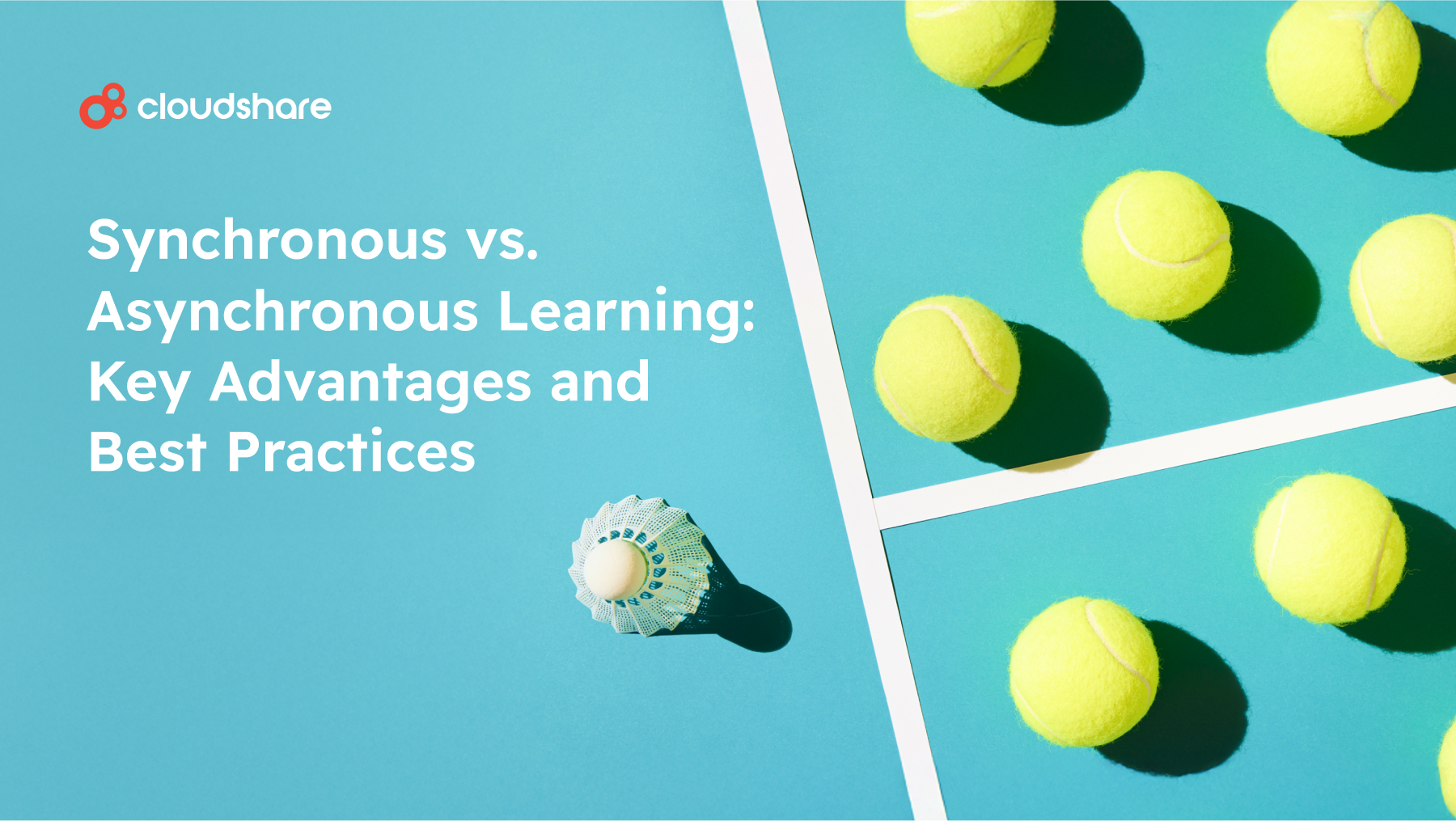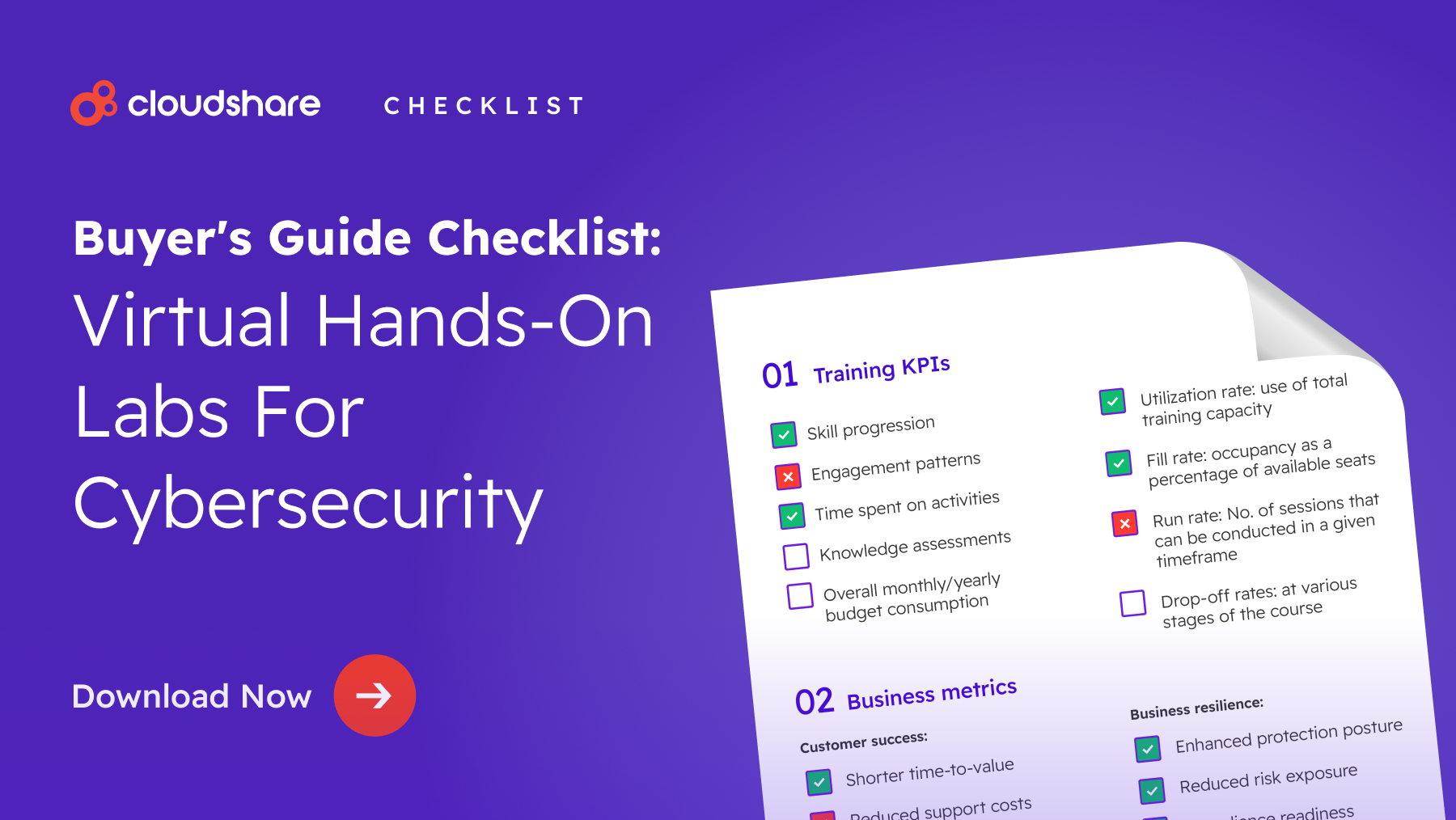
Whether you’re designing an employee onboarding program or creating material for a customer education initiative, one of the first things you’ll need to decide is your approach. Will you choose synchronous learning, asynchronous learning, or something in between?
This article will review the differences between synchronous and asynchronous learning, their respective benefits and drawbacks, and a few best practices for choosing between them.
What is Synchronous Learning?
Synchronous learning happens on a set schedule and in real-time. In either a physical or a virtual classroom, participants meet with an instructor who controls both the content and cadence of the training.
Benefits of Synchronous Learning
Human interaction is the biggest plus point of synchronous education. Participants are free not only to converse and collaborate but also to direct questions to the instructor, who can provide immediate feedback.
Synchronous training also makes it easy to stay on track and on task. Participants will generally be expected to adhere to both a concrete schedule and strict due dates. This means anyone who’s prone to procrastination is less likely to fall behind.
Lastly, synchronous training keeps everybody on the same page. This makes it easier for participants to collaborate with one another.
Drawbacks of Synchronous Learning
Scheduling is both the biggest strength and the biggest weakness of synchronous learning. Even if it helps some participants remain focused, a rigid classroom schedule means people can’t simply access content and learn whenever they’re available. They have to stick to the same routine as everyone else.
This can also be frustrating for participants who are struggling as much as those who want to run ahead. The former might feel like they’re being left behind by their peers. The latter, meanwhile, may start to feel that their time is being wasted and consequently become far less engaged in the material.
Synchronous training is also highly dependent on the instructor. Even if the training content is compelling and engaging, an inexperienced or unskilled teacher can still torpedo an entire course.
What is Asynchronous Learning?
Asynchronous learning is a training model in which participants engage with content on their own schedules and at their own speeds. Apart from completion deadlines and submission dates, asynchronous education doesn’t follow a set schedule. Participants may also have the option to join discussion boards or reach out to an instructor for assistance.
Advantages of Asynchronous Learning
The biggest advantage of asynchronous learning by far is its flexibility. Participants don’t have to worry about falling behind their classmates, because everyone is going at their own pace. This also means that a participant can skip over a particular chapter or module they already understand or dedicate extra time to one they’re struggling with.
Asynchronous learning content is also easy to personalize via artificial intelligence, a key consideration since the materials are delivered to individuals rather than an entire class. Personalizing content according to different learning styles and knowledge levels makes training content more accessible, engaging, and ultimately effective.
Finally, asynchronous learning tends to be more cost-effective than synchronous learning, as there’s no need to involve an instructor. It’s also far easier to scale, as you don’t need to worry about finding additional instructors — just the minimal resources required to support more modules and training sessions.
Disadvantages of Asynchronous Learning
Human beings are social creatures. We tend to do our best learning when working with others. That’s not really possible with asynchronous learning — even with resources like chatrooms and discussion boards, participants are ultimately still completing their coursework on their own.
When used as part of employee onboarding, asynchronous training can even damage morale, making the new hire feel disconnected and isolated.
Lastly, because asynchronous learning is, by nature, self-paced, it can be challenging for those with a tendency to procrastinate. They might struggle to motivate themselves when it comes to completing a course.
Asynchronous vs. Synchronous Learning: Key Differences
Let’s take a moment to summarize the key differences between the two learning methods.

Best Practices for Choosing a Training Strategy
There’s really no wrong answer when choosing between an asynchronous training approach and a synchronous one. It comes down to what you’re trying to accomplish and what you feel would be most effective. Ask yourself the following questions:
- How complex is the training content? Would participants benefit from the directions of an instructor?
- For whom is the training being developed?
- At what scale do you expect to deliver your training?
- What is the most cost-effective choice overall?
Can You Combine Asynchronous and Synchronous Training?
There’s no rule saying that your training program can’t include both synchronous and asynchronous elements. Many training initiatives do precisely that. Let’s say you’re hosting a customer education course exploring advanced use cases for your software.
Consider including a few supplementary self-paced modules that allow participants to deeply dive into each use case or explore how the use case manifests in specific industries.
Next: Explore the Power of Blended Learning
Now you know the difference between asynchronous and synchronous learning — and hopefully, have a decent idea of which one is a good fit for you.
Next, why not see what it looks like when you’ve got the best of both worlds? Check out 5 Benefits of Blended Learning for Corporate Training.





